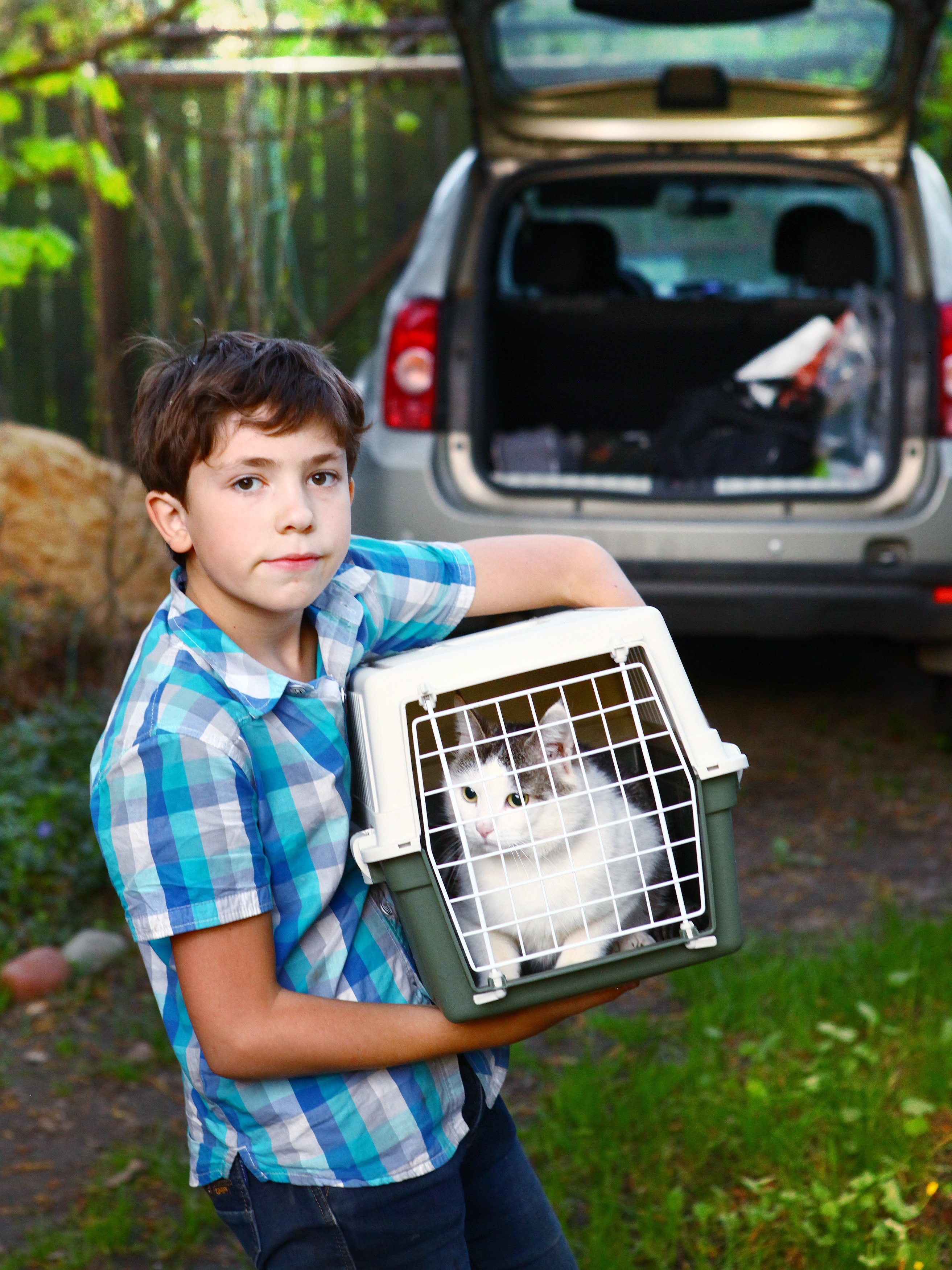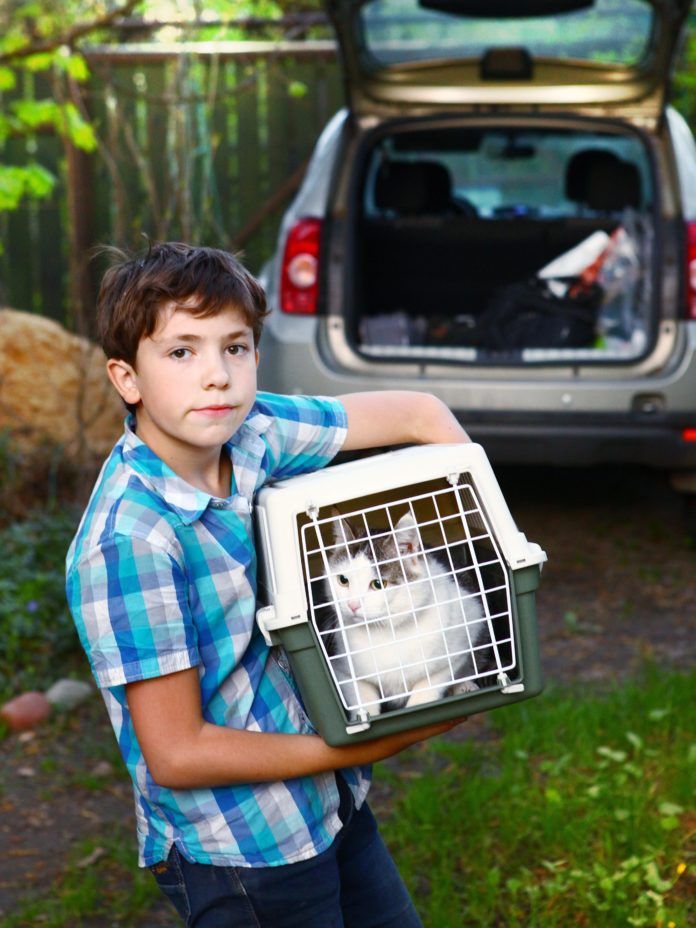
Some of us leave our pets at home when we travel, but if your cat is coming along on a trip, you need to prepare for her as well. You must have:
-Enough food for the duration of the trip, plus extra in case of delays
-Vaccination records and a health certificate if flying or crossing state lines
-Cat carrier
-Harness with ID tag and leash; microchip, if possible
Before Leaving. If your cat is not already used to her carrier, get it out as far in advance as possible to allow her time to check it out (see the cover article for crate-training suggestions). Set the carrier up with bedding that smells like home and maybe a favorite toy or two. Pack your cat’s regular food and any medications, as well as veterinary records, such as vaccination history.
Harnesses are better than collars because they are harder to wiggle out of. Put an identification tag on the harness in case your cat manages to get loose. If your cat has never worn a harness before, get her used to it before the trip so it is not an extra source of stress.
If your cat has a history of being extremely stressed out or nauseous when traveling, talk to your veterinarian about sedatives or anti-nausea medication.
And don’t forget to look up pet-friendly hotels before you leave.
Road Trips. For shorter drives up to half a day long, your cat should be OK without a litter box, although disposable litter boxes are a great option for bathroom stops on the go. If you are concerned about your cat being nauseous and vomiting in the car, withhold food the night before. For water, either get a spill-proof bowl to go in your cat’s carrier or plan to give your cat a chance to drink during stops.
Your cat should spend the drive in his carrier with his harness on. The carrier prevents him from interfering with the driver and will help protect him in case of a crash. Secure the carrier on the floor, with a seatbelt, or with a strong cable that keeps the crate still against the seat.
The harness will allow you to easily clip a leash on when getting him out of the carrier on stops or at your final destination. It also ensures that your cat has identification in case he darts out the door. Even the quietest, friendliest cats can get scared in a new environment, so never rely on just holding your cat in your arms.
Flying. Check with your airline ahead of time to be sure that your cat is welcome on the flight, and make sure your carrier is airline-approved. Most airlines have specific crate ventilation, door, and material requirements.
Withhold food the night before to decrease the risk of your cat vomiting, and pack her carrier with absorbent bedding in case she urinates during the flight. Find out if you can take the cat as carry-on luggage or if she has to ride in cargo.
At Your Destination. If staying in a hotel, inspect the room to make sure it is cat-proof before letting your cat loose. Check under the bed for trash, and look behind all furniture and along walls for any holes that your cat might be able to squeeze into. And don’t forget the bathroom! Keep the deadbolt latched when your cat is loose in the room to prevent him from slipping out the door.
If visiting friends or family, many cats are the most comfortable if confined to one room or area of the house. This allows them to have easy access to food, water, and a litter box, and prevents them from getting lost in the house. Use the same precautions as in a hotel and check for any nooks and crannies where your kitty could hide. For extended stays, you can expand your cat’s territory in the house as he settles in.
Another great option to keep your cat confined, but with a little space, is to pick up a large fabric dog crate. These fabric crates are lightweight and fold down for easy transport, allowing plenty of room for your cat to stretch his legs and have a litter box while still safely confined.




